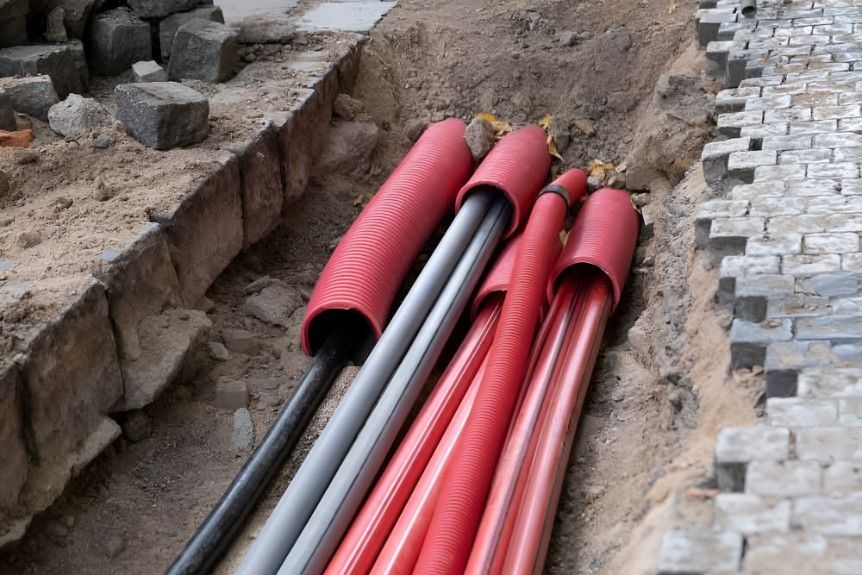4 Common Challenges When Locating Pipes And Cables
January 25, 2024
When embarking on a construction or excavation project, one of the first hurdles you encounter is the invisible network of
pipes
and
cables
hidden beneath the surface. These are vital to our modern infrastructure, yet their invisibility poses significant challenges. In this blog, we'll explore the common obstacles faced during pipe and cable location. Understanding these challenges is essential for the safety and success of your project.

1. Accurately Locating Deeply Buried Pipes And Cables
Locating deeply buried pipes and cables is like finding hidden treasure without a map. The deeper they are, the harder it is to detect their exact location and de
p
th. The material of the pipes and cables further adds to this challenge. This complexity underscores the importance of having the right tools and expertise to accurately locate these essential yet elusive underground utilities. Professionals use advanced detection technology and methods to dig deeper into the ground with greater accuracy.
2. Overcoming Signal Interference In Urban Areas
Urban areas are buzzing with electromagnetic noise, which can interfere with the signals used in locating underground utilities. This noise, stemming from various sources like nearby electrical systems, mobile networks and even everyday appliances, creates a challenging environment for accurate detection.
In such environments, the risk of signal interference is a major hurdle that can lead to inaccuracies and potential hazards during excavation. To combat this, professionals rely on advanced detection technologies and refined methodologies.
In such environments, the risk of signal interference is a major hurdle that can lead to inaccuracies and potential hazards during excavation. To combat this, professionals rely on advanced detection technologies and refined methodologies.
3. Identifying Non-Metallic Underground Utilities
Non-metallic utilities, like plastic pipes or fibre optics, are difficult to identify. They don't conduct electricity, making them invisible to traditional metal detectors:
- Ground Penetrating Radar (GPR): This technology sends radar pulses into the ground and interprets the reflected signals to locate non-metallic utilities.
- Thermal Imaging: In some cases, thermal imaging may help identify the heat signature of pipes.
4. Locating Pipes And Cables Near Other Infrastructure
When pipes and cables run close to other infrastructure, like buildings or roads, the risk of damage and safety concerns increase.
Proximity Precautions
Extra care is needed to ensure that the locating process doesn't disrupt nearby structures or utilities.
Advanced Mapping
Using advanced mapping techniques helps create a clear picture of the underground network in relation to the surrounding infrastructure.
Pipe And Cable Location Services In Wollongong
In conclusion, locating pipes and cables is a task filled with challenges, but professionals have the expertise and tools to manage them effectively. If you need pipe and cable location services in Wollongong, contact us at Dowd's Pipe & Cable Locating. Our team is equipped with the knowledge and tools to ensure your project proceeds safely and efficiently.
